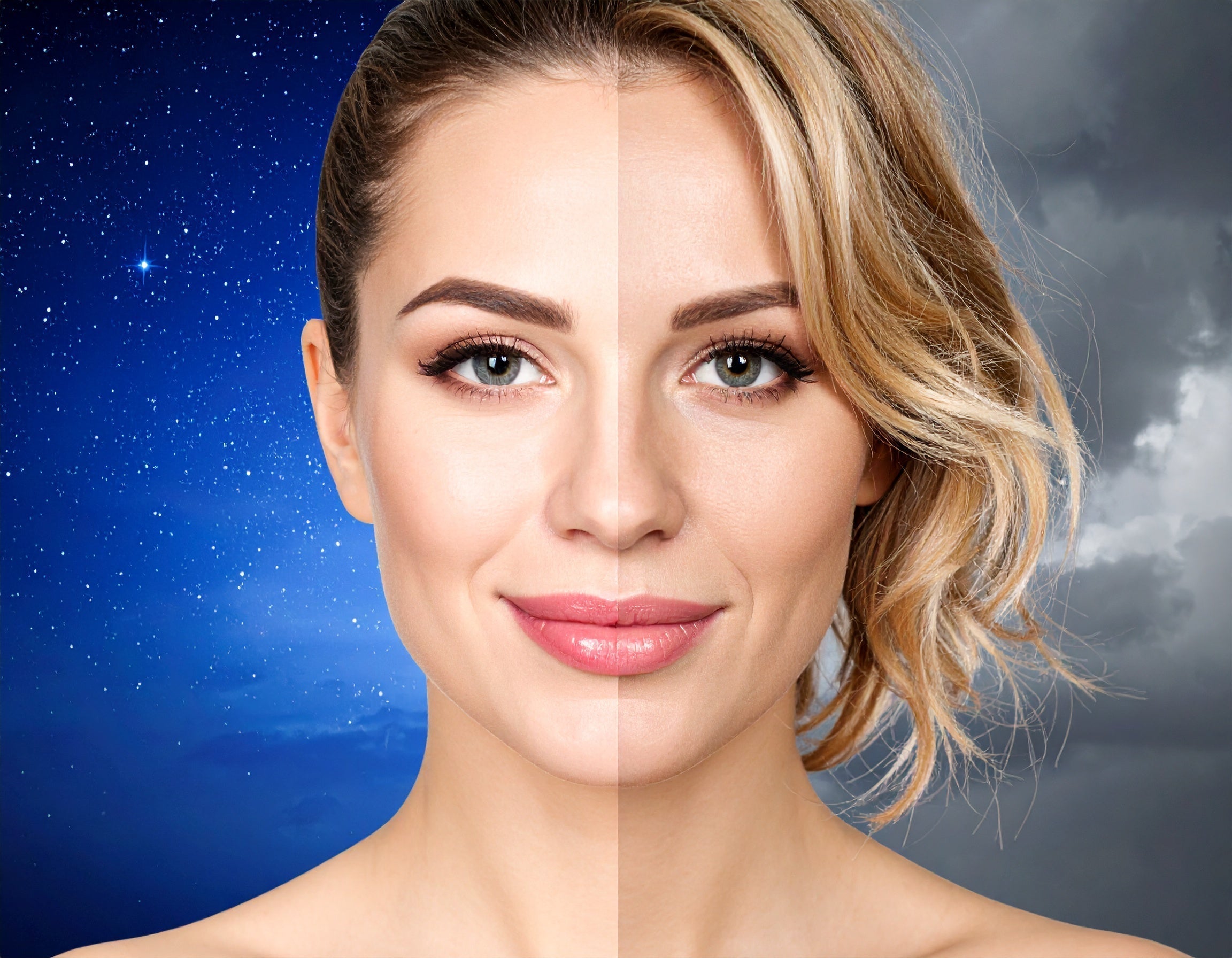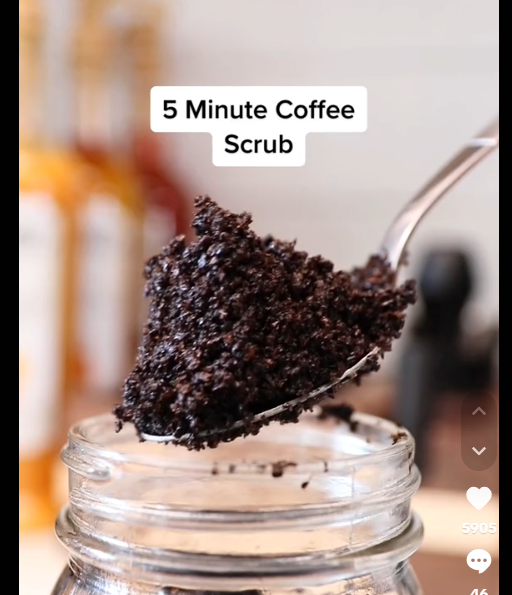Mes amies, after fifteen years of practicing dermatology and watching beauty trends sweep through Paris like the changing seasons, I must confess something that might ruffle a few perfectly coiffed feathers: the clean beauty movement has become as muddled as Seine water after a rainstorm. What began as a genuine desire for transparency has transformed into a marketing phenomenon that often resembles a game of téléphone—where scientific facts get whispered from brand to brand until they emerge completely transformed.
As someone who has dedicated her career to understanding what truly makes skin healthy and beautiful, I feel compelled to illuminate the path between genuine scientific clean beauty and the theatrical performance that sometimes masquerades as evidence-based skincare. Allons-y—let's separate the wheat from the chaff, shall we?
 The Great Natural versus Synthetic Masquerade
The Great Natural versus Synthetic Masquerade
The clean beauty industry has painted a picture as black and white as a vintage French film, where natural ingredients wear white hats and synthetic compounds lurk in the shadows like villains in a Hitchcock thriller. But science, ma chérie, is rarely so accommodating to our desire for simple narratives. This binary thinking is one of the most persistent clean beauty myths I encounter in my practice.
Consider this: botulinum toxin—one of the most potent neurotoxins known to science—is entirely natural, produced by bacteria that have been perfecting their craft for millennia. Meanwhile, hyaluronic acid synthesized in laboratories is molecularly identical to what our own skin produces, yet somehow the synthetic version is branded as "unclean" while the natural toxin gets a pass because it occurs in nature. C'est fou, non?
The truth about ingredient safety evaluation lies not in origin stories but in molecular structure, concentration, formulation context, and clinical research. A synthetic vitamin C is as beneficial to your skin as one extracted from oranges—in fact, it's often more stable and effective. The molecule doesn't carry a passport indicating its birthplace; it simply performs its antioxidant function regardless of whether it was born in a laboratory or a citrus grove.
 Decoding the Language of Fear
Decoding the Language of Fear
Marketing departments have become masterful storytellers, weaving tales of danger around ingredients with names that sound like they belong in a chemistry textbook rather than on a vanity table. They've created what I call "syllable syndrome"—the longer the name, the more sinister it must be. But this linguistic prejudice reveals more about our discomfort with scientific terminology than actual safety concerns.
Take methylisothiazolinone, for instance. The name alone could make you want to run for the hills, n'est-ce pas? Yet this preservative, when used within established safety limits, protects your products from harmful bacteria and mold—the same microorganisms that could cause serious skin infections or reactions. Meanwhile, "rose water" sounds delightful and clean, but roses naturally contain compounds that can cause contact dermatitis in sensitive individuals. The poetry of the name doesn't determine the safety of the ingredient.
Evidence-based natural skincare requires us to look beyond these linguistic gymnastics and examine actual research data. Safety isn't determined by syllable count or pronunciation difficulty—it's established through rigorous testing, clinical studies, and decades of monitored use across diverse populations.
 The Dose Makes the Medicine (Or the Poison)
The Dose Makes the Medicine (Or the Poison)
Comme on dit, the dose makes the poison—a principle that Paracelsus understood centuries ago but seems to have gotten lost in modern marketing translation. This fundamental concept of toxicology is perhaps the most misunderstood aspect of ingredient safety facts. Water, essential for life itself, can be toxic in excessive quantities, while many synthetic ingredients are perfectly safe at the concentrations used in cosmetics.
The clean beauty movement often ignores this crucial principle, treating all exposure as equal regardless of concentration. It's like comparing a single drop of wine in a glass of water to drinking an entire bottle—the substance is the same, but the biological impact is worlds apart. Formulation science operates on this principle of appropriate dosing, ensuring that active ingredients are present in sufficient quantities to be effective while remaining well below levels that could cause harm.
I often tell my patients to imagine ingredients like guests at a dinner party. A small group of diverse personalities can create delightful conversation and chemistry, but too many strong personalities or the wrong combinations can create chaos. The art lies not in avoiding all synthetic guests but in understanding how they interact with one another and with your skin's unique ecosystem.
The Research Reality Check
Here's where scientific clean beauty diverges most dramatically from marketing clean beauty: the emphasis on peer-reviewed research over Instagram testimonials. Real science is patient and methodical, like a slow-simmered coq au vin—it takes time to develop depth and complexity. Marketing science, however, wants to be a plat minute—fast, flashy, and immediately satisfying, regardless of nutritional value.
When evaluating ingredient safety, I look for studies published in reputable dermatological journals, conducted over meaningful time periods, with appropriate control groups and statistical significance. I'm interested in research that examines not just immediate reactions but long-term effects, interactions with other ingredients, and outcomes across different skin types and conditions.
The challenge is that genuine research rarely makes for compelling marketing copy. A study showing that a particular botanical extract demonstrates modest anti-inflammatory properties in controlled laboratory conditions doesn't translate well to social media soundbites. It's much easier to claim that the same extract "harnesses ancient wisdom" or "unlocks nature's secrets" than to explain the nuanced reality of how it actually functions.
The Preservative Paradox
One of the most fascinating contradictions in clean beauty logic revolves around preservation. We've been conditioned to fear preservatives like they're uninvited guests at our skincare soirée, yet they serve as the bodyguards protecting our products from genuinely dangerous microorganisms. It's like refusing security at a bank because you don't like the way the guards look in their uniforms.
The preservative paradox becomes even more pronounced when we consider that many "clean" products either have shortened shelf lives, require refrigeration, or use "natural" preservation systems that may be less thoroughly tested than their synthetic counterparts. I've seen more skin reactions from improperly preserved "clean" products than from conventional formulations with time-tested preservative systems.
Entre nous, I'd rather trust a preservative system that has been studied for decades and proven safe at specific concentrations than experiment with my patients' skin using untested "natural" alternatives that sound more appealing in marketing materials.
 The Regulation Reality
The Regulation Reality
The clean beauty movement often operates under the assumption that cosmetic regulation is insufficient, painting regulatory agencies as either incompetent or corrupted by industry influence. But having worked within the framework of cosmetic safety for years, I can attest that the regulatory landscape is far more sophisticated than these narratives suggest.
Ingredient safety evaluation involves multiple layers of assessment, from initial toxicological studies to post-market surveillance. The European Union's cosmetic regulations, which govern products sold in France, are among the most stringent in the world. When an ingredient is approved for cosmetic use, it has undergone extensive safety testing that considers everything from acute toxicity to reproductive effects.
This doesn't mean the system is perfect—no regulatory framework ever is. But it does mean that the apocalyptic scenarios painted by some clean beauty advocates are more fiction than fact. The idea that conventional cosmetics are loaded with dangerous chemicals that somehow escaped regulatory notice is as implausible as suggesting that French wine regulations allow vintners to bottle anything they please.
Making Peace with Chemistry
Perhaps the most important lesson I've learned in my fifteen years of practice is that chemistry isn't the enemy of beauty—it's the language in which beauty speaks. Every reaction on your skin, from the simplest moisturizing to the most complex cellular repair, is fundamentally a chemical process. Whether those chemicals originated in a laboratory or a lavender field is less important than whether they're appropriate for your skin's needs and formulated safely.
Scientific clean beauty isn't about avoiding all synthetic ingredients or embracing every natural compound. It's about developing ingredient literacy—the ability to read beyond marketing claims and understand what research actually says about safety and efficacy. It's about recognizing that "clean" is a marketing term, not a scientific classification, and that true formulation science considers the entire ecosystem of a product, not just the origin story of individual ingredients.
 The Path Forward
The Path Forward
En fin de compte, the future of evidence-based natural skincare lies not in choosing sides between natural and synthetic, but in demanding transparency, rigorous testing, and honest communication from brands regardless of their philosophical positioning. We need companies that invest in real research rather than just marketing research, that acknowledge the limitations of their claims, and that respect the intelligence of consumers enough to share actual data rather than fear-based narratives.
As consumers, we must become more comfortable with scientific nuance and less susceptible to the black-and-white thinking that reduces complex chemistry to simple morality tales. Your skin deserves better than decisions based on ingredient phobias or marketing fairy tales—it deserves the thoughtful, evidence-based approach that genuine formulation science provides.
Après tout, beautiful skin is the result of understanding, not ignorance; of science, not superstition; and of making informed choices rather than fearful ones. The clean beauty movement has raised important questions about transparency and sustainability, but the answers lie in rigorous science, not marketing mythology.
📚 Continue Reading

Humidity and Your Skin: Adjusting Products Based on Environmental Moisture
The blog post discusses how humidity affects skin and recommends adjusting skincare products, such as moisturizers and serums, to maintain healthy skin throughout the year's varying humidity levels.

Sleep Quality and Skin Regeneration: Is Beauty Sleep a Real Thing?
Beauty sleep is a real thing; adequate sleep significantly improves skin regeneration and overall skin health.

"Debunking Viral TikTok Skincare Trends Coffe Scrubs, Ice Facials, and the Baking Soda Facial"
The Bonjout Beauty blog post debunks several popular TikTok skincare trends, highlighting their potential harm and offering evidence-based alternatives.

